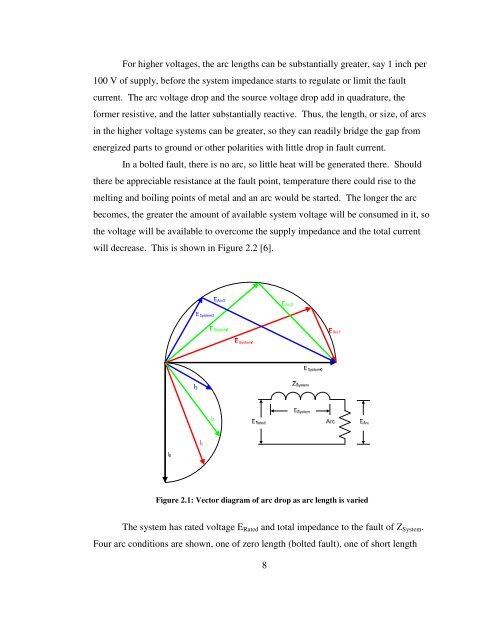arc-flash analysis of utility power systems - Michigan Technological ...
arc-flash analysis of utility power systems - Michigan Technological ...
arc-flash analysis of utility power systems - Michigan Technological ...
Create successful ePaper yourself
Turn your PDF publications into a flip-book with our unique Google optimized e-Paper software.
For higher voltages, the <strong>arc</strong> lengths can be substantially greater, say 1 inch per<br />
100 V <strong>of</strong> supply, before the system impedance starts to regulate or limit the fault<br />
current. The <strong>arc</strong> voltage drop and the source voltage drop add in quadrature, the<br />
former resistive, and the latter substantially reactive. Thus, the length, or size, <strong>of</strong> <strong>arc</strong>s<br />
in the higher voltage <strong>systems</strong> can be greater, so they can readily bridge the gap from<br />
energized parts to ground or other polarities with little drop in fault current.<br />
In a bolted fault, there is no <strong>arc</strong>, so little heat will be generated there. Should<br />
there be appreciable resistance at the fault point, temperature there could rise to the<br />
melting and boiling points <strong>of</strong> metal and an <strong>arc</strong> would be started. The longer the <strong>arc</strong><br />
becomes, the greater the amount <strong>of</strong> available system voltage will be consumed in it, so<br />
the voltage will be available to overcome the supply impedance and the total current<br />
will decrease. This is shown in Figure 2.2 [6].<br />
Figure 2.1: Vector diagram <strong>of</strong> <strong>arc</strong> drop as <strong>arc</strong> length is varied<br />
The system has rated voltage E Rated and total impedance to the fault <strong>of</strong> Z System .<br />
Four <strong>arc</strong> conditions are shown, one <strong>of</strong> zero length (bolted fault), one <strong>of</strong> short length<br />
8
















